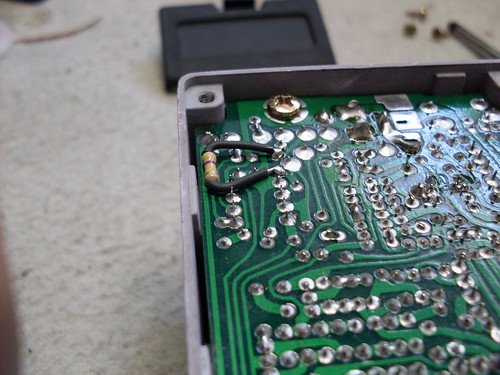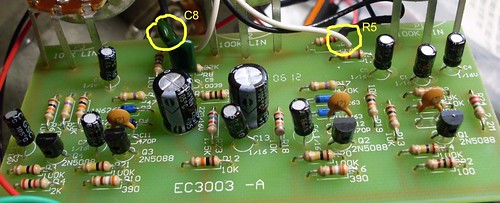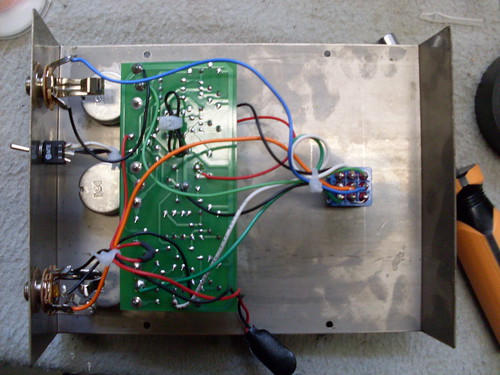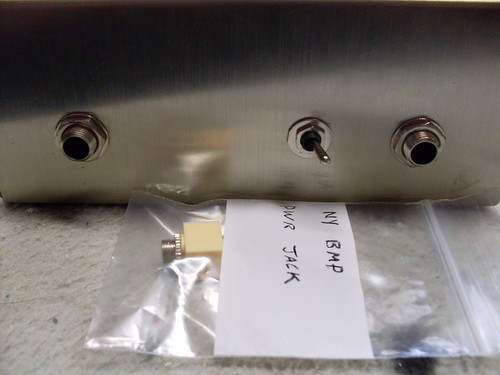This modification works by adding a resistor to the underside of the circuit board in parallel with an already present resistor effectively dropping the original part value, and changing the circuit to allow faster rates, resulting in a pseudo rotary speaker type of sound at some settings.
I personally used a 470K resistor instead of the recommended 510K and it worked fine. There's a lot of hype surrounding this on the thread I linked to. It does give way to some pretty good rotary speaker-like sounds at the newly available higher speeds, but obviously still doesn't touch standing in front of a Leslie. I would say though, that this mod, being as simple and easily reversible as it is, is practically a must try for any CS-9 owner. Note that the slow speeds are still available.
What you need:
1. Soldering Iron
2. Solder
3. A 500K (approximate values are fine) 1/4 watt resistor
4. Electrical tape or heat shrink tubing
5. 5 minutes
What you do:
1. Pop open the pedal
2. Locate the points you need to solder to (Look at the 2 photos below, larger photos are available on the Roadside Guitars Flickr. Double-clicking the photos here will take you there)


There are also more photos available on the previously mentioned thread.
3. Trim and heat shrink the legs of the new resistor (if you're using tape, wait until after you've soldered the resistor down, then just tape around the whole thing).
4. Solder that thing in there (it should look like the above photos), plug in and check to see that everything's working, and enjoy your new high speeds. The effect is particularly nice in stereo.
Good luck!
-Matt




